Beta lactam monotherapy versus beta lactam-aminoglycoside combination therapy for fever with neutropenia: systematic review and meta-analysis
- PMID: 12763980
- PMCID: PMC156012
- DOI: 10.1136/bmj.326.7399.1111
Beta lactam monotherapy versus beta lactam-aminoglycoside combination therapy for fever with neutropenia: systematic review and meta-analysis
Abstract
Objective: To compare the effectiveness of beta lactam monotherapy versus beta lactam-aminoglycoside combination therapy in the treatment of patients with fever and neutropenia.
Data sources: Medline, Embase, Lilacs, the Cochrane Library, and conference proceedings to 2002. References of included studies and contact with authors. No restrictions on language, year of publication, or publication status.
Study selection: All randomised trials of beta lactam monotherapy compared with beta lactam-minoglycoside combination therapy as empirical treatment for patients with fever and neutropenia.
Data selection: Two reviewers independently applied selection criteria, performed quality assessment, and extracted data. An intention to treat approach was used. Relative risks were pooled with the random effect model.
Main outcome measure: All cause fatality.
Results: Forty seven trials with 7807 patients met inclusion criteria. Nine trials compared the same beta lactam. There was no significant difference in all cause fatality (relative risk 0.85, 95% confidence interval 0.72 to 1.02). For success of treatment there was a significant advantage with monotherapy (0.92, 0.85 to 0.99), though there was considerable heterogeneity among trials. There was no significant difference between monotherapy and combination treatment in trials that compared the same beta lactam, whereas there was major advantage with monotherapy in trials that compared different beta lactams (0.87, 0.80 to 0.93). Rates of superinfection were similar. Adverse events, including those associated with severe morbidity, were significantly more common in the combination treatment group. Detected flaws in methods did not affect results.
Conclusions: For patients with fever and neutropenia there is no clinical advantage in treatment with beta lactam-aminoglycoside combination therapy. Broad spectrum beta lactams as monotherapy should be regarded as the standard of care for such patients.
Figures
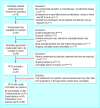
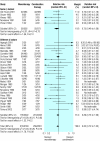
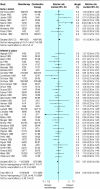

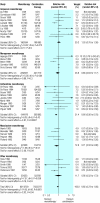
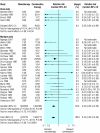

References
-
- Hughes WT, Armstrong D, Bodey GP, Bow EJ, Brown AE, Calandra T, et al. 2002 guidelines for the use of antimicrobial agents in neutropenic patients with cancer. Clin Infect Dis 2002;34: 730-51. - PubMed
-
- Paesmans M. Risk factors assessment in febrile neutropenia. Int J Antimicrob Agents 2000; 16: 107-11. - PubMed
-
- Elting LS, Rubenstein EB, Rolston KV, Bodey GP. Outcomes of bacteremia in patients with cancer and neutropenia: observations from two decades of epidemiological and clinical trials. Clin Infect Dis 1997;25: 247-59. - PubMed
-
- Pizzo PA, Hathorn JW, Hiemenz J, Browne M, Commers J, Cotton D, et al. A randomized trial comparing ceftazidime alone with combination antibiotic therapy in cancer patients with fever and neutropenia. N Engl J Med 1986;315: 552-8. - PubMed
Publication types
MeSH terms
Substances
LinkOut - more resources
Full Text Sources
Medical
Miscellaneous
